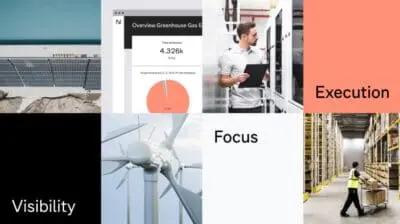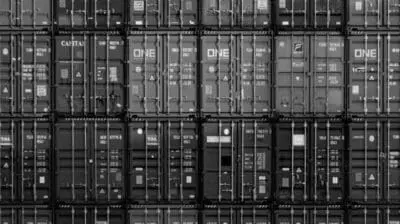How the financial services industry can lead the net-zero transition: a white paper

Financial industry actors can use this white paper to guide their decision-making on the journey towards net zero.
Download the free white paper
Drawing on insights from finance industry leaders, this white paper charts a path through the regulatory landscape, the challenges organizations face, and how to move forward.
Why read the white paper?
The financial services industry is at a crossroads in the transition to net-zero emissions. Financial actors now face the choice between taking a reactive or proactive approach to navigating the rapidly unfolding global transition to a net-zero economy.
The white paper examines this choice that all practitioners of the industry are faced with at such a critical crossroads. By providing a deeper understanding of the trends and interconnectedness of the regulatory and standards environment, the paper equips practitioners with a map of the landscape they need to navigate. Industry leaders at Bankers for Net Zero and CDP, together with contributions from Nordea and UBS Global Wealth Management, share insights into the challenges of the net-zero transition in finance – and how these can be overcome.
The analysis of recent regulatory developments and future trends shows how taking a reactive stance in the transition will increase an organization’s operational, legal, and reputational risks. The proactive path to net zero, on the other hand, is shown to create long-term resilience and growth for financial institutions – and is thus the most viable option to ensure a sustainable transition.
With finance being the backbone of the economy, it is increasingly urgent to answer the question of how this critical sector can take on a leadership role in the transition to net zero. This white paper takes a step in this direction and provides a valuable resource for guiding decision-making on the industry’s journey towards net zero.
What’s in the white paper?
1. Introduction
Get a high-level picture of the challenge faced by the global economic system: the transition to a net-zero economy.
2. The financial services industry at a crossroads
Understand the three fundamental risk factors associated with climate-related events – transition risks, physical risks, and liability or litigation risks – to which investors, regulators, and other stakeholders demand a response. The paper examines the growing number of public commitments, pledges, and alliances aimed at addressing climate and environmental issues, as well as how bottlenecks, such as the lack of consistent data and disclosure standards, are leading to the widespread failure to take action or report on progress.
Excerpt from CDP’s contribution to the white paper.With less than a third of financial institutions (29%) having set portfolio targets for climate change, this is an area where more progress is needed. When setting targets and engaging with companies, institutions should be looking at how their portfolios align to a time-bound plan to limit warming to 1.5 degrees, based on science.
3. The map: disclosure regulations and standards for the financial services industry
Learn how the landscape is broken down into four categories of climate-related disclosure regulations and standards: climate regulations and legislation, disclosure frameworks, climate commitments, and carbon accounting standards. This includes summary graphics of major regulations and legislation in the EU, UK, and US, as well as the most influential disclosure frameworks for the financial services industry.
The chapter also explores three trends in disclosure regulations and standards.
4. Progress made and remaining challenges
Lift the lid on real-life examples from practitioners in the industry who explain how they have been navigating the map thus far and the challenges that remain.
CDP Europe’s Associate Director Capital Markets, Torun Reinhammar, provides an overview of the current state of climate change disclosures in the financial services industry. UBS Global Wealth Management’s Sustainable Investment Strategist Antonia Sariyska describes the disclosure challenges faced by financial institutions. A contribution from Nordea describes the bank’s role and the progress it has made in the net-zero transition, and another from Bankers for Net Zero (B4NZ) highlights the importance of an SME emission disclosure and data standard.
5. The financial services sector’s path forward
Get guidance on the benefits of taking a proactive approach and insights from industry practitioners as to how financial actors can meet challenges – such as decarbonizing financial value chains – through data-driven decision making based on comprehensive, science-backed data.
Ultimately, the path to long-term resilience and growth for financial institutions is also the path to net zero. Find out how you can lead the charge.











